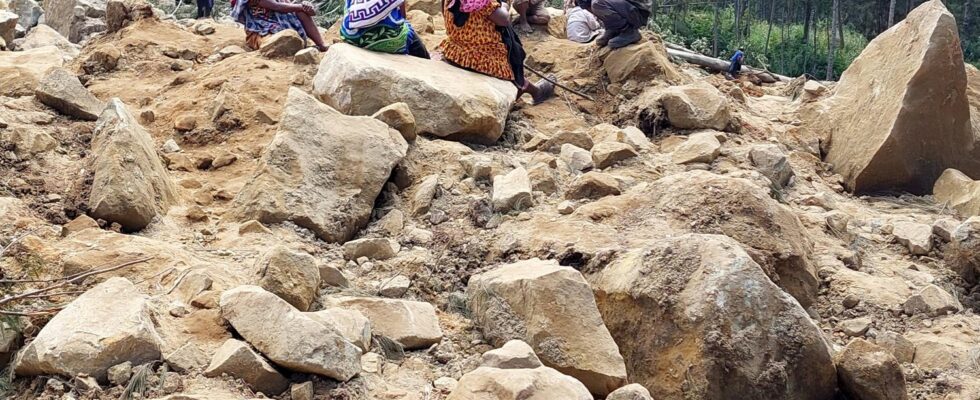The disaster occurred on Friday night, and surprised the population in their sleep. Rescuers revised the number of victims upwards, noting that the village concerned had more inhabitants than expected.

Published
Reading time: 1 min

A large landslide in Papua New Guinea buried more than 2,000 people, the authorities of the Pacific country announced to the UN on Monday, May 27, communicating a new toll that was much heavier than initially estimated. The disaster caused “significant destruction of buildings and food gardens and had a major impact on the country’s economy”the country’s national disaster management center told the UN office in the capital Port Moresby, according to a copy of a letter obtained by AFP.
A hillside village in Enga province, in the center of the archipelago, was almost completely wiped out when a section of Mount Mungalo collapsed around 3 a.m. Friday, burying dozens of houses and surprising the inhabitants in their sleep. The estimated number of victims had already been raised to 670 this weekend, when rescuers realized that the village hit by the landslide had more inhabitants than expected.
“The situation remains unstable as the landslide continues to move slowly, posing a constant danger to rescue teams and survivors”, warn the authorities in their letter. The scale of the disaster required “immediate and concerted actions on the part of all stakeholders”, including the military and national and regional stakeholders. The agency appealed for help from the international community, asking the United Nations to inform Papua New Guinea’s development partners “and other international friends” of the situation.
Serhan Aktoprak, head of the UN migration agency based in Port Moresby, previously announced that rescuers were carrying out “a race against time” to find survivors. Emergency services work in dangerous conditions, particularly due to “rocks [qui] continue to fall and move the ground”specified Serhan Aktorprak. “To make matters worse, groundwater flows under the debris, transforming the ground surface into a slide”he added, specifying that around 250 houses located nearby were evacuated as a precautionary measure.
